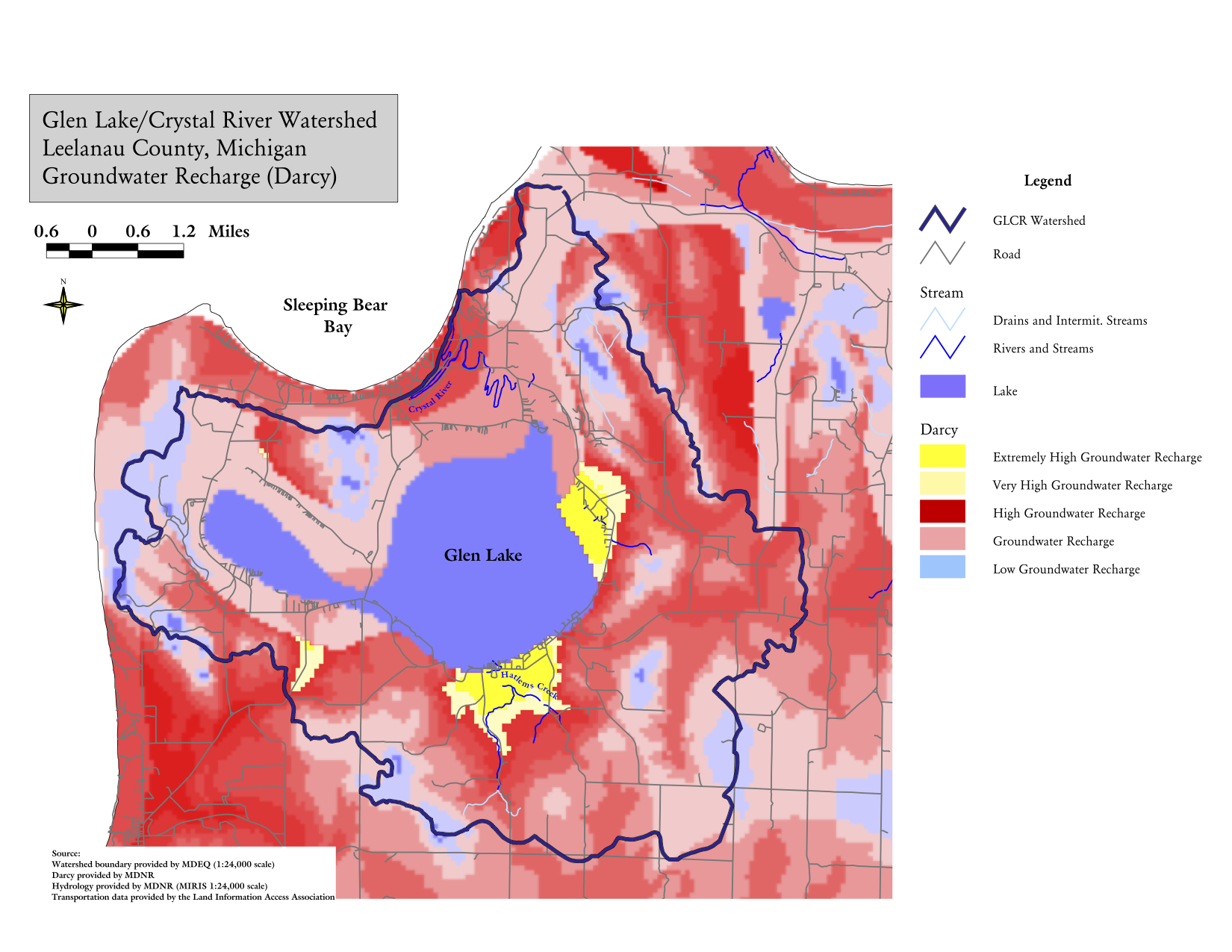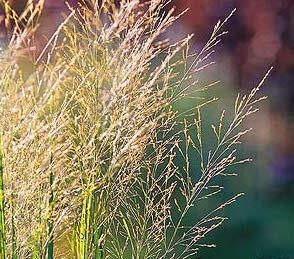 Groundwater is water that has filtered through the ground and lies “perched” on bedrock or clay. Some of it comes from rain and snowmelt, some of it from during and even before the time of glaciers. This water flows, pulled along by gravity. The flow is either fast or slow depending on the topography and coarseness of the soil. Steep slopes and sandy soils will have faster groundwater flow and low slope gradients and heavy clay soils will yield slower groundwater flow. Either way, the groundwater eventually makes its way to Glen Lake and the Crystal River.
Groundwater is water that has filtered through the ground and lies “perched” on bedrock or clay. Some of it comes from rain and snowmelt, some of it from during and even before the time of glaciers. This water flows, pulled along by gravity. The flow is either fast or slow depending on the topography and coarseness of the soil. Steep slopes and sandy soils will have faster groundwater flow and low slope gradients and heavy clay soils will yield slower groundwater flow. Either way, the groundwater eventually makes its way to Glen Lake and the Crystal River.
Why does all this matter? Water that enters the soil will travel through, picking up and carrying pollution along the way, eventually delivering toxic chemicals into the lake, including PFAS, excessive nutrients, or harmful bacteria from improperly functioning septic systems.
 A lack of natural groundcover can reduce groundwater recharge by causing run-off of rain and snowmelt. When water flows over the ground surface, it can pick up sediment and pollutants, carrying them directly into the lake. Natural vegetation like trees, shrubs and native grasses help intercept this water, allowing it to go into the soil. Vegetation also helps keep water in the ground by protecting against evaporation. Do your part and protect our water, seen and unseen. Groundwater or surface water, they are all connected. Remember our GLA saying, “It’s All About the Water!”
A lack of natural groundcover can reduce groundwater recharge by causing run-off of rain and snowmelt. When water flows over the ground surface, it can pick up sediment and pollutants, carrying them directly into the lake. Natural vegetation like trees, shrubs and native grasses help intercept this water, allowing it to go into the soil. Vegetation also helps keep water in the ground by protecting against evaporation. Do your part and protect our water, seen and unseen. Groundwater or surface water, they are all connected. Remember our GLA saying, “It’s All About the Water!”
This topic is a reminder that it’s especially important to be mindful of what we put in and on our land. This applies to upland and inland areas, too, not just along our shores. We have to consider the whole watershed. Even miles from the shore, the groundwater from these places eventually makes its way to the lake. Groundwater not only replenishes Glen Lake, we also depend on it for our drinking water. Shorelander or Uplander, we all bear the responsibility to protect the land, in order to keep our groundwater unpolluted.
Want to know more? Learn about groundwater here.
Recent Comments